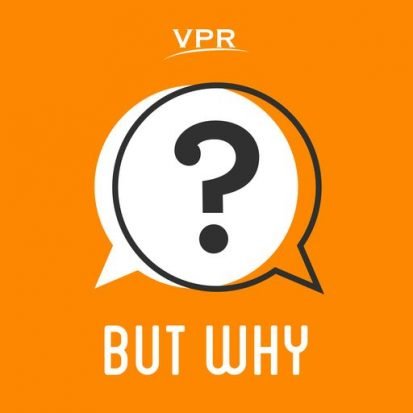
Why are some people left-handed?
Leave a reviewWhy are some people right-handed and some are left-handed? And what’s up with some people being ambidextrous (equally good with both hands)? Why, in the past, did some people try to make left-handed people use their right hands? We talk with Chris McManus, professor and author of the book Right Hand, Left Hand: The Origins of Asymmetry in Brains, Bodies, Atoms, and Cultures. We’ll even find out how common left-handedness (or left-pawedness) is in other animals!
© Vermont Public Radio | 27:40
|Episode: 178 |
Full episode description
 Episode One: But Why: Intro For Adults
Episode One: But Why: Intro For Adults
This is an Episodic show. You can listen to it in any order, but episode one is always a great place to start.Full Episode description
Why are some people right-handed and some are left-handed? And what’s up with some people being ambidextrous (equally good with both hands)? Why, in the past, did some people try to make left-handed people use their right hands? We talk with Chris McManus, professor and author of the book Right Hand, Left Hand: The Origins of Asymmetry in Brains, Bodies, Atoms, and Cultures. We’ll even find out how common left-handedness (or left-pawedness) is in other animals!
Download our learning guides: PDF | Google Slide | Transcript
Why do we prefer one hand over the other? McManus says it probably pays to specialize. It’s better to do something with one hand over and over and get really good at it, as opposed to doing it sometimes with one hand and sometimes with the other. For example, it takes years to develop your handwriting, so it would take twice as long to develop good handwriting with both hands!
How do we pick which hand? We chose the hand that feels more normal to us, and then we practice with that hand. Try a simple experiment: bring your hands together quickly and entwine your fingers like you’re holding hands with yourself. Which thumb do you have on top? Now switch which thumb is on top. It probably feels a bit wrong.
90 percent of people use their right hand more. Our brain is asymmetrical (different on the right and left sides), and most of us use the left half of our brain to talk. Our heart is also on the left side of our body for most humans and vertebrates.
There must be an advantage to being left-handed or we wouldn’t have left-handed people, but no one is sure exactly what that advantage is.
What about people who say they’re ambidextrous? McManus believes there’s no such thing. He says people who say they’re ambidextrous are generally good at different things with each hand, but aren’t actually equally good at everything with both hands. McManus calls these people mixed-handers.
Many animals also have handedness. But while right-handedness is dominant i people, animals tend to split down the middle. (So, for example, half of cats are right-handed, half are left-handed. Same goes for dogs and mice etc.
in the 19th century, when people wrote with pens dipped in inkwells, writing with your left hand was messy business, as left hands would smear ink across the page. But as people have shifted to mostly typing, the hand you write with matters less.
For every five left-handed boys, there are only four left-handed girls, and scientists have no idea why.
© Vermont Public Radiobop| Status: Active, 259 episodes | Kind: Episodic | Episode URL
The content, Artwork and advertising within this podcast is not owned or affiliated with Sound Carrot and remain the property of their respective owners.









5 stars for the incredible knowledge that cats can be left handed too! Mind. Blown.